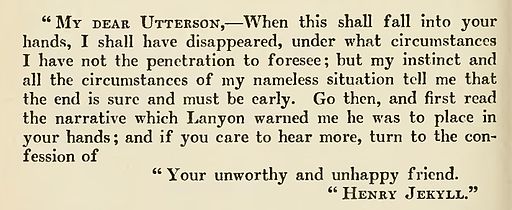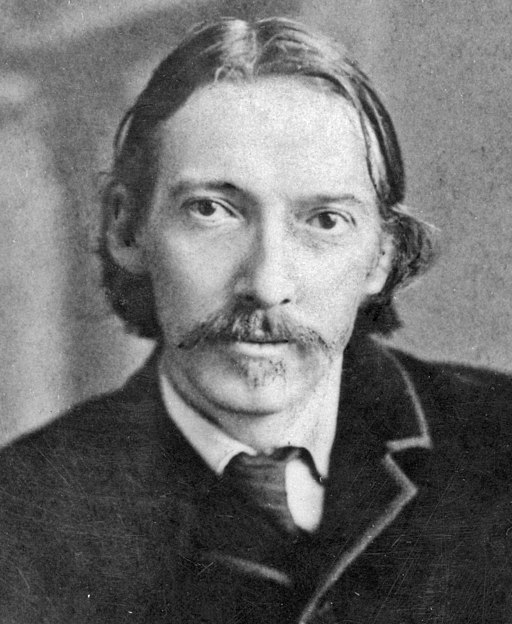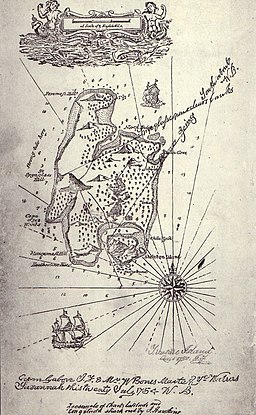Robert Louis Balfour Stevenson (1850-1894) was born in Edinburgh on the 13 November 1850. His father and grandfather were both successful engineers who built many of the lighthouses that dotted the Scottish coast, whilst his mother came from a family of lawyers and church ministers. A sickly boy whose mother was also often unwell, Stevenson spent much of his childhood with the family nurse, Alison Cunningham. She told him many ghost stories and supernatural tales which seem to resonate throughout Stevenson's later fiction, reappearing in several of his short-stories, such as 'The Body Snatchers', 'The Merry Men', and 'Thrawn Janet'. In 1867, Stevenson enrolled at Edinburgh University to study engineering. The choice of subject was influenced by Stevenson's father, who wished his son to continue the prestigious family tradition. Stevenson however had other ambitions, and even at this early stage, expressed a desire to write. He shortly changed courses and began to study law, but soon gave this up to concentrate on writing professionally, much to the displeasure of his father.
Stevenson married Fanny Osborne in May 1880. The newly-married couple set off on honeymoon together, accompanied by Fanny's son, Lloyd Osborne, from her previous marriage. The three started their trip in San Francisco, traveling through the Napa Valley to eventually arrive at an abandoned gold mine on Mount St Helena. Stevenson would later write about this experience in his travel memoir The Silverado Squatters (1883).
In August 1880 he sailed with Fanny and Lloyd from New York back to Britain. Both his parents were on the wharf at Liverpool waiting for the newly married couple to arrive, and seemed happy to see their son return home. Fanny was slowly able to patch up the differences that had arisen between father and son over Stevenson's choice of career.
Between the years 1880 to 1887, Stevenson searched in vain for a suitable climate to accommodate his poor health. He and Fanny eventually settled in Bournemouth in July 1884, with Stevenson naming the house 'Skerryvore' after the tallest lighthouse in Scotland which had been designed by his uncle Alan. Henry James was one of their first (and frequent) visitors.
Stevenson was very ill throughout the years he lived at Skerryvore and often unable to leave the house. Although his health was failing, he was still able to write a great deal of work during this period. In 1885 he published A Child's Garden of Verses, The Dynamiter, and Prince Otto. Jekyll and Hyde and Kidnapped followed in 1886, and The Merry Men was published in 1887. It was through these texts, written and published in quick succession, that Stevenson was able to establish his reputation as a serious author.
On 8 May 1887, Stevenson's father died. Unfortunately, Stevenson was so unwell that he was unable to attend the funeral. Following the death of his father, Stevenson decided to take the advice of his doctor and move to a warmer climate. A few months later on the 22 August, Fanny and Stevenson - along with Fanny's son Lloyd and Stevenson's mother - left for New York.
In the following June of 1888, Stevenson charted a yacht and set sail with his family from San Francisco. For nearly three years he traveled the eastern and central Pacific, the sea air and warm climate briefly restoring his health.
Stevenson decided to remain in the Pacific. In 1890 he purchased a plot of land of about 400 acres in Upolu, an island in Samoa. Here, after much work and two aborted attempts to visit Scotland, he established himself upon his estate in the village of Vailima. Stevenson decided to take the native name of 'Tusitala', which is Samoan for 'Teller of Tales'.
Always an ardent traveller, Stevenson spent the final years of his life living in Samoa. He wrote several works of fiction whilst living here, including Catriona and The Ebb-Tide.
He died suddenly on 3 December, 1894, leaving The Weir of Hermiston - the novel he was working on at the time of his death - unfinished. He was buried at the top of Mount Vaea above his home on Samoa. Part of his own short poem, 'Requiem' (from an 1887 collection) was written on his tomb: 'Under the wide and starry sky, / Dig the grave and let me lie...'
Upon hearing of his friends death, Henry James wrote the following lines in a letter to Edmund Gosse. Dated 17 December 1894, the letter reads as follows:
'I meant to write to you tonight on another matter - but of what can one think, or utter or dream, save of this ghastly extinction of the beloved R.L.S? It is too miserable for cold words - it's an absolute desolation. It makes me cold and sick - and with the absolute, almost alarmed sense, of the visible, material, quenching of an indispensable light'
Publications
Several of Stevenson's texts are written for children. Treasure Island (1883) was the first of these, inspired by a map Stevenson had drawn with his stepson Lloyd whilst holidaying in Scotland. This was followed by the collection of poems A Child's Garden of Verses (1885), The Black Arrow (1883), Kidnapped (1886) and its sequel Catriona (1893). However, although the four novels mentioned above all have youthful protagonists and were all first published in magazines for young people, they are also clearly intended for adult readers.
The Strange Case of Dr Jekyll and Mr Hyde is arguably the most famous of Stevenson's texts. A huge success upon its publication in 1886, the novella caused a sensation, drawing upon Victorian anxieties regarding human identity, respectability, and the fear of regression; concerns which fuel the theme of Gothic horror prevalent throughout the text.

A literary celebrity during his lifetime, Stevenson works have been admired by many famous writers including Henry James, Ernest Hemingway and Rudyard Kipling. He was in regular correspondence with Henry James. The two authors would discuss 'the art of fiction' in their letters to one another and the works of other contemporary writers, including those of Thomas Hardy.
Chronology of Stevenson's Major Works
- Treasure Island (1883) His first major success, a tale of piracy, buried treasure, and adventure.
- Prince Otto (1885) Stevenson’s third full-length narrative, an action romance set in the imaginary Germanic state of
Grünewald. - The Strange Case of Dr Jekyll and Mr Hyde (1886), a novella displaying Victorian Gothic themes about a dual personality.
- Kidnapped (1886) A historical novel that tells of the boy David Balfour's pursuit of his inheritance in the intrigues
of Jacobite troubles in Scotland. - The Merry Men and Other Fables Contained six short-stories, including 'Olalla'
- The Master of Ballantrae (1889), a masterful tale of revenge, set in Scotland, America, and India.
- Catriona (1893) A sequel to Kidnapped, telling of Balfour's further adventures.
- The Ebb-Tide (1894); co-written with Lloyd Osbourne.
- Weir of Hermiston (1896). Unfinished at the time of Stevenson's death.


